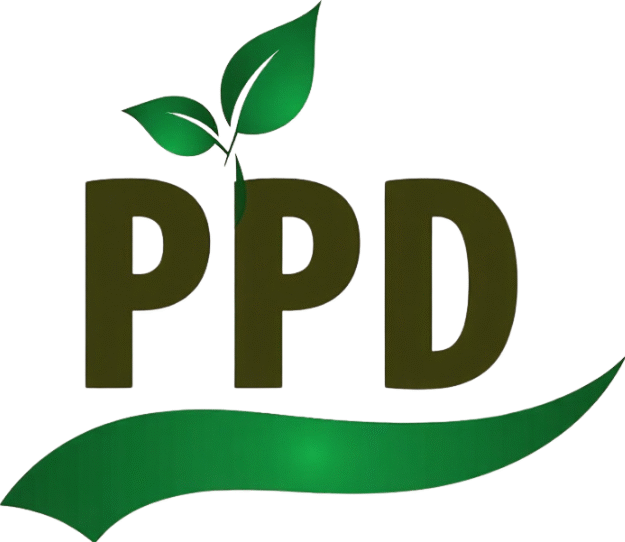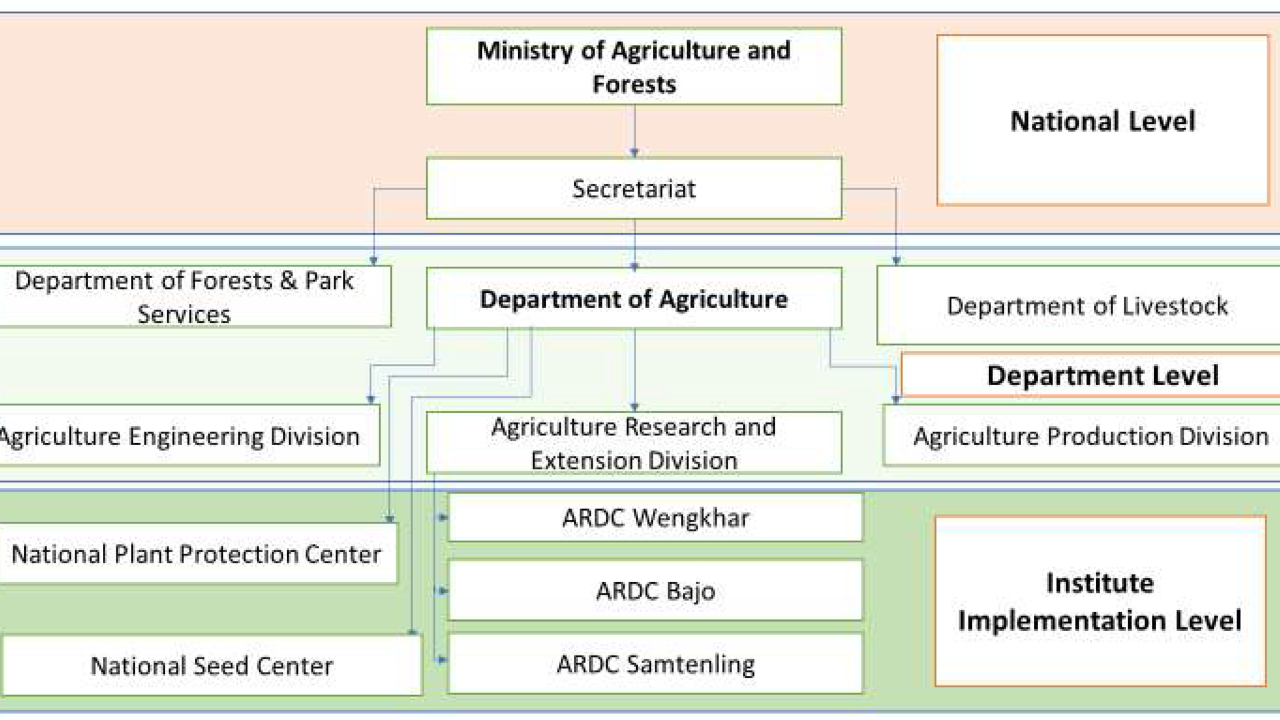
Myanmar’s agricultural sector forms the backbone of its economy and food security system. At the heart of this sector lies the Department of Agriculture (DOA), a vast, multi-functional institution responsible for planning, regulating, and innovating across crop production, plant protection, and biosecurity. Its efficiency depends not just on its internal structure but also on interdepartmental collaboration that allows different units to work toward a shared vision of sustainable agricultural development.
This article explores the hierarchical organization and interdepartmental collaboration within the DOA, highlighting how it governs agricultural activities, ensures plant health, supports rural development, and aligns with international standards.
1. Understanding the Hierarchy: Structured for Functional Clarity
The Department of Agriculture operates under the Ministry of Agriculture, Livestock, and Irrigation (MOALI) and is structured with clear vertical and horizontal hierarchies for command and function.
Top-Level Leadership:
- Director General (DG):
The DG is the chief executive of the DOA and provides overall strategic leadership, policy alignment, and international representation. - Deputy Director Generals (DDGs):
Each DDG oversees a major thematic area such as Plant Protection, Agricultural Research, Extension Services, and Administration.
Divisions Under DOA:
| Division Name | Primary Function |
|---|---|
| Plant Protection Division | Pest control, quarantine, pesticide regulation |
| Department of Agricultural Research (DAR) | Crop research, varietal development |
| Extension Division | Farmer training, field demonstrations, crop advisory |
| Seed Division | Seed quality control, certification, distribution |
| Soil and Water Management | Soil testing, fertility enhancement, irrigation techniques |
| Administration and Finance | HR, budgeting, procurement, and records |
Each division is led by a Director, who supervises Deputy Directors, Assistant Directors, and township-level officers.
2. Interdepartmental Collaboration: A Coordinated System of Expertise
Given the cross-cutting nature of agriculture, divisions must work in synchrony to ensure policy coherence, efficient service delivery, and rapid response to threats like pests or climate impacts.
Modes of Collaboration:
- Joint Task Forces:
Temporary or permanent bodies formed during crises (e.g., Fall Armyworm outbreak) or to oversee national programs (e.g., IPM implementation). - Technical Committees:
Multi-division panels that evaluate policies, research outcomes, and plant health protocols. - Field Integration:
Township-level agricultural officers coordinate inputs from different divisions during farmer support visits or national campaigns (e.g., seed distribution). - Digital Data Platforms:
Emerging systems where divisions share real-time data on pests, yields, weather, and seed movement.
3. Functional Relationships Between Key Divisions
a. Plant Protection Division (PPD) & Extension Division
- PPD develops pest surveillance and control strategies.
- Extension officers carry these strategies to farmers via field schools and advisory sessions.
- Both coordinate on training programs and outbreak responses.
b. DAR & Seed Division
- DAR develops new crop varieties.
- Seed Division ensures certified seeds are multiplied and distributed to farmers.
- Feedback loops exist where farmer experiences guide further research.
c. PPD & Soil & Water Management Division
- Pest problems often stem from poor soil or water practices.
- Joint programs aim at eco-friendly approaches to prevent pest breeding.
4. Governance at Sub-National Levels
The hierarchical and collaborative model extends to State, Region, District, and Township levels.
| Level | Key Roles |
|---|---|
| State/Region | Supervise regional implementation of DOA policies |
| District | Coordinate among township offices; monitor field operations |
| Township | Direct interaction with farmers; organize training and inputs |
Field officers often function as cross-division facilitators, gathering data for DAR, distributing seed from the Seed Division, and reporting pest outbreaks to PPD.
5. Collaboration with Other Ministries and Agencies
Interdepartmental collaboration goes beyond DOA’s internal structure. DOA works closely with:
- Ministry of Commerce (MoC): On export quality and phytosanitary certifications.
- General Administration Department (GAD): During national emergencies or border-level interventions.
- Customs Department: For quarantine and import/export control.
- Ministry of Health: In cases where pesticide use affects public health.
- International Bodies: Such as FAO, ASEAN, and IPPC for training, standards, and compliance.
Overview Table: Hierarchy and Collaboration Snapshot
| Category | Details |
|---|---|
| Top Executive | Director General |
| Key Divisions | Plant Protection, DAR, Extension, Seed, Soil & Water |
| Collaboration Mode | Task forces, technical panels, shared digital systems |
| Sub-National Levels | Region > District > Township coordination |
| External Partners | MoC, Customs, GAD, FAO, IPPC, NGOs |
| Field Implementation Agents | Township-level officers integrating cross-division inputs |
6. Challenges in Coordination
While interdepartmental coordination is increasingly structured, it still faces operational hurdles:
- Communication gaps between central and field offices due to infrastructure limitations.
- Overlapping responsibilities, leading to unclear accountability in field operations.
- Limited cross-training, with officers specializing too narrowly in their division.
- Budget bottlenecks, delaying joint field responses and program rollouts.
7. Recent Reforms and Innovations
Myanmar’s DOA is actively reforming its collaborative and hierarchical systems to become more responsive and efficient:
- Digital Agriculture Tools: Shared databases for pest alerts, seed tracking, and soil mapping.
- Cross-Training Programs: Officers now receive training in multiple areas (e.g., IPM and seed certification).
- Decentralization: Regional offices given more autonomy to tailor interventions to local needs.
- PPP Initiatives: Partnering with private seed companies and agri-tech startups for better input delivery.
Conclusion
The Department of Agriculture’s hierarchical structure and interdepartmental collaboration form the backbone of Myanmar’s plant health and food security strategies. By maintaining functional clarity within divisions while fostering communication and joint operations across them, the DOA is better equipped to manage modern agricultural challenges—from pest invasions to climate-induced crop failures. Future improvements in digital integration, field training, and cross-sector partnerships will only strengthen this dynamic governance model.
Top 3 One-Line FAQs
Q1: Who leads the Department of Agriculture in Myanmar?
A: The Department is led by a Director General under the Ministry of Agriculture, Livestock, and Irrigation.
Q2: How do different divisions within the DOA work together?
A: They collaborate through task forces, joint programs, and shared data systems.
Q3: What roles do township agricultural officers play?
A: They serve as field-level coordinators across multiple DOA divisions, directly engaging with farmers.

